Rare Rides Icons, The Nissan Maxima Story (Part I)

With the recent and not surprising news of the Nissan Maxima’s planned demise in 2023, it’s time for a Rare Rides retrospective on a nameplate that was once lauded as one of the best sporty sedans on the market. From its origins as a rear-drive Datsun to the eighth generation that’s a shadow of its former self, the Maxima persisted with its unique value proposition: That it was a step up from the standard Japanese family sedan. Our story begins in Japan, with the Bluebird range.
Datsun offered a series of compact cars to international markets since the late Sixties when it launched the Bluebird 510. A new offering for 1967, the 510 had a comprehensive lineup of body styles with two, four, or five doors. Datsun used the Bluebird name continually in Japan but typically stuck to number designations in other markets. The 510 proved that Datsun could sell a family car internationally, and was a repeatable formula for success.
The first repeat occurred in 1971 when the Bluebird 610 debuted as a 1972 model in Japan. With more features and a focus on ease of use, it was badged as the Bluebird-U at home. The U meant “user-oriented,” and brought with it a fun catchphrase for its home market advertising: “Bluebird U - Up You!”
Even more popular than the 510, the 610 expanded Datsun’s share of the family car market. It also led to the creation of the similar looking (but smaller) 710 line. The 710 used the 610’s familiar looks and aimed to compete with the new Carina from Toyota (the 610 was competition for the Corona).
Datsun stuck to a roughly five-year model cycle at the time and started production of a third-generation Bluebird in 1976 called the 810. Though it was considered a new generation, the 810 carried over all engines from the 610 (and added additional mills) and rode on the same 98.4-inch wheelbase. Other exterior dimensions were very similar, and the styling was evolutionary as well.
In every direction, the 810 grew an inch or two over the 610. Length increased from 165.9 inches to 167.7”, and width increased from 63” to 64.2”. Height decreased by one inch to 54.7”, as the 810 leaned into a sportier fastback appearance that was not as emphasized on the 610. Still available in a trio of body styles, the 810 was offered with four doors as a sedan, five doors as a wagon, and in two-door coupe format.
It was this Bluebird 810 that arrived in North America as the Datsun 810 and laid the foundation for the upcoming Maxima. The 810 was on sale for the 1977 to 1980 model years and arrived with a 2.4-liter inline-six engine. Datsun offered six cylinders specifically to cater to the North American customer. With 125 horsepower, the I6 sent its power through the rear wheels via a four- or five-speed manual transmission. Most examples were manual, though some engines received fuel injection and an optional automatic.
While North Americans were getting used to their more powerful 810s, the Maxima name appeared across the sea for the first time. It was used as a badge on the back of the new JDM Stanza, specifically the A10 generation. The A10 was the second generation 710, and transitioned its naming from 710 to Violet, and then to Stanza.
North America received the second-gen 710 as the 510, as Datsun attempted to complete the circle and remind customers how good the 510 was. It’s worth observing that Datsun’s various branding by the market at the time was a complete jumble. In any case, the short-lived Stanza Maxima would donate its name to an all-new car in a couple of years.
Said all-new car was the new Bluebird 910, of the G910 generation. Bringing no clarity to the situation, the Bluebird 910 was the replacement for the Bluebird 810 in its home market of Japan but was branded as Datsun 810 most everywhere else. Specifically for North American purposes, there were two trims of 810 when it arrived for the 1981 model year: Deluxe and Maxima. History showed us one of those trims meant nothing, while the other became a legend.
The new 810 existed in its split trim format for just one year, as in 1981 there was a complete rework. All examples from 1981 onward were called Datsun Maxima, and the 810 disappeared permanently from North America. Body formats were two, a four-door sedan and a five-door wagon. The previous 810 was available as a two-door coupe in North America for 1979 and 1980 but disappeared thereafter as Datsun focused its two-door representation on the Z. Time for a side step into the politics of branding.
Right as the new 810 arrived in North America, a name transition was underway at Datsun. Historically, though Nissan produced trucks and cars only its trucks wore Nissan badges. Passenger cars, whether designed and built by Datsun or Nissan, were branded as Datsun. There was a time in the Sixties when Datsun branded some of its cars as Nissans, but only in very limited numbers.
Internally the company long favored the Datsun name, as it provided distance from Nissan’s involvement with Japan’s military production during World War II. But all changed in the early Eighties. In September of 1981, Datsun announced a name change to Nissan for North America. The company planned to pursue a global strategy that would see all its wares branded as Nissan vehicles.
There was speculation that the real reason for the name change to Nissan was a bit different than the PR people stated. It’s suggested the top brass at Nissan were tired of seeing the vehicles they designed and built badged as Datsun, while the competition at Honda and Toyota stamped vehicles with their true identity and were well-known in North America. The transition was a long one and saw vehicles arrive with miniature Nissan or “Datsun by Nissan” badges as early as the late Seventies.
The official name change campaign ran from the 1982 through 1984 model years, and North American Datsuns also wore Nissan badges. New models like the Stanza and Sentra were the first to go without any Datsun badging, as they debuted as Nissans in 1982. In the Maxima’s case, between 1981 and 1983 it wore a Datsun badge that said “by Nissan'' underneath.
The Maxima’s transition to both names in full-size badging did not occur until 1984, as the first-generation car was in its final year.
Elsewhere the transition to Nissan was not as fast or clear cut, where some cars wore Datsun and Nissan badging until 1986. A different tack was taken in the UK market where the Nissan name was put first, as Nissan/Datsun or Nissan-Datsun, as seen in the 1983 brochure above. The brochure carefully explained how the Datsuns the British had been buying for years were carefully designed and constructed by Nissan.
Naming games aside, the Maxima ran for five years in its first generation as a flagship offering in North America. We’ll pick up there next time, and review the design and specifications of the only rear-drive Maxima ever.
[Images: Nissan]
Become a TTAC insider. Get the latest news, features, TTAC takes, and everything else that gets to the truth about cars first by subscribing to our newsletter.

Interested in lots of cars and their various historical contexts. Started writing articles for TTAC in late 2016, when my first posts were QOTDs. From there I started a few new series like Rare Rides, Buy/Drive/Burn, Abandoned History, and most recently Rare Rides Icons. Operating from a home base in Cincinnati, Ohio, a relative auto journalist dead zone. Many of my articles are prompted by something I'll see on social media that sparks my interest and causes me to research. Finding articles and information from the early days of the internet and beyond that covers the little details lost to time: trim packages, color and wheel choices, interior fabrics. Beyond those, I'm fascinated by automotive industry experiments, both failures and successes. Lately I've taken an interest in AI, and generating "what if" type images for car models long dead. Reincarnating a modern Toyota Paseo, Lincoln Mark IX, or Isuzu Trooper through a text prompt is fun. Fun to post them on Twitter too, and watch people overreact. To that end, the social media I use most is Twitter, @CoreyLewis86. I also contribute pieces for Forbes Wheels and Forbes Home.
More by Corey Lewis
Latest Car Reviews
Read moreLatest Product Reviews
Read moreRecent Comments
- Lou_BC Well, I'd be impressed if this was in a ZR2. LOL
- Lou_BC This is my shocked face 😲 Hope formatting doesn't fook this up LOL
- Lou_BC Junior? Would that be a Beta Romeo?
- Lou_BC Gotta fix that formatting problem. What a pile of bullsh!t. Are longer posts costing TTAC money? FOOK
- Lou_BC 1.Honda: 6,334,825 vehicles potentially affected2.Ford: 6,152,6143.Kia America: 3,110,4474.Chrysler: 2,732,3985.General Motors: 2,021,0336.Nissan North America: 1,804,4437.Mercedes-Benz USA: 478,1738.Volkswagen Group of America: 453,7639.BMW of North America: 340,24910.Daimler Trucks North America: 261,959



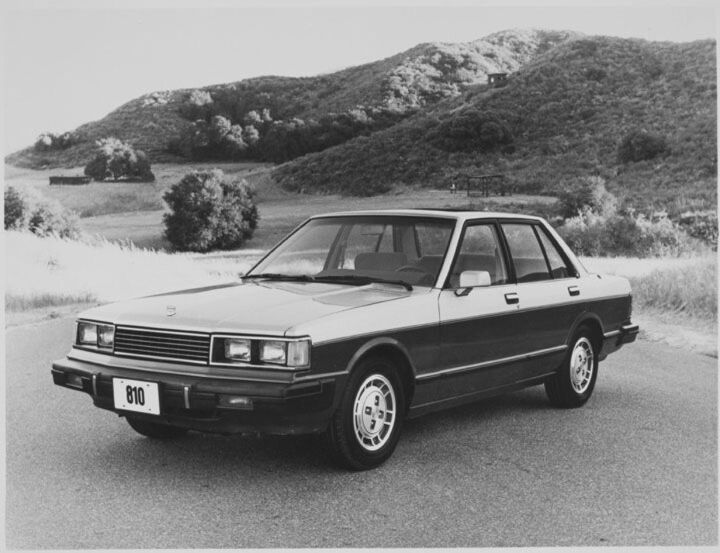






















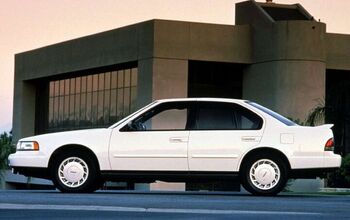
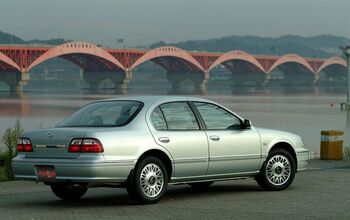
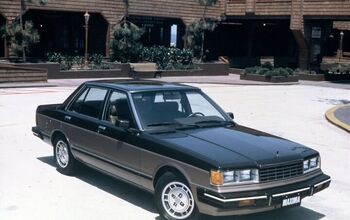
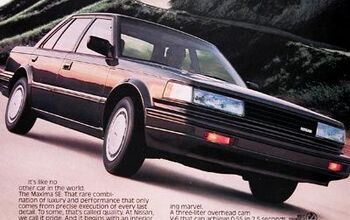
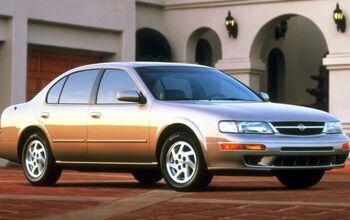


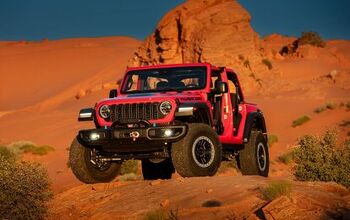
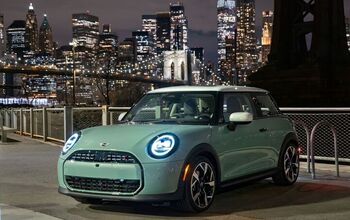
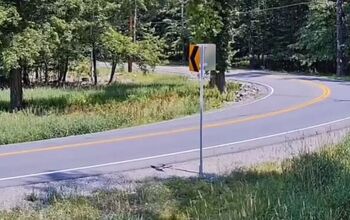

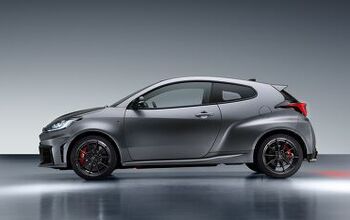



Comments
Join the conversation
Had a 210 'Sunny', 2-door. It was a base model with zero options (for example a rubber floor without any carpeting), that we used as a courier style vehicle. It took all kinds of aggravation/bad treatment, received only minimal maintenance and never once complained or let us down.
When I was a kid, the joke about Nissan choosing the name Datsun goes like this:
Nissan execs were uncomfortable with the World War 2 connotations of their name in the North American market. Seeing how successful VW was over here, they went to VW's most-recent German ad agency. The Japanese told the Germans they needed a new name. The Germans agreed. They asked the Nissan execs when they wanted a review of potential names. The execs said two weeks.
The German ad people said, "dat soon?"
I will be crucified.